Kid’s room paint ideas are some of the easiest and least expensive ways to transform your child’s personal space. Paint ideas for children’s rooms can go beyond the conventional and embrace creative paint ideas that reflect their personalities and spark their imagination.

From whimsical murals to soothing pastels, the options for painting your child’s room are limitless. Whatever look you want to create, these paint ideas will provide the spark that will inspire you to create a space that nurtures your child’s sense of wonder and individuality.
Kid’s room paint ideas can be diverse and creative, reflecting your child’s personality, preferences, and stage of life.
 KES Studio
KES Studio
Identify your child’s sources of inspiration and use painted wall murals to create a cohesive space. A painted mural can turn their bedroom into a place that will surprise, delight, and inspire imaginative play for years to come, whether it is an underwater world, an outer space scene, a secret garden, or a jungle scene.
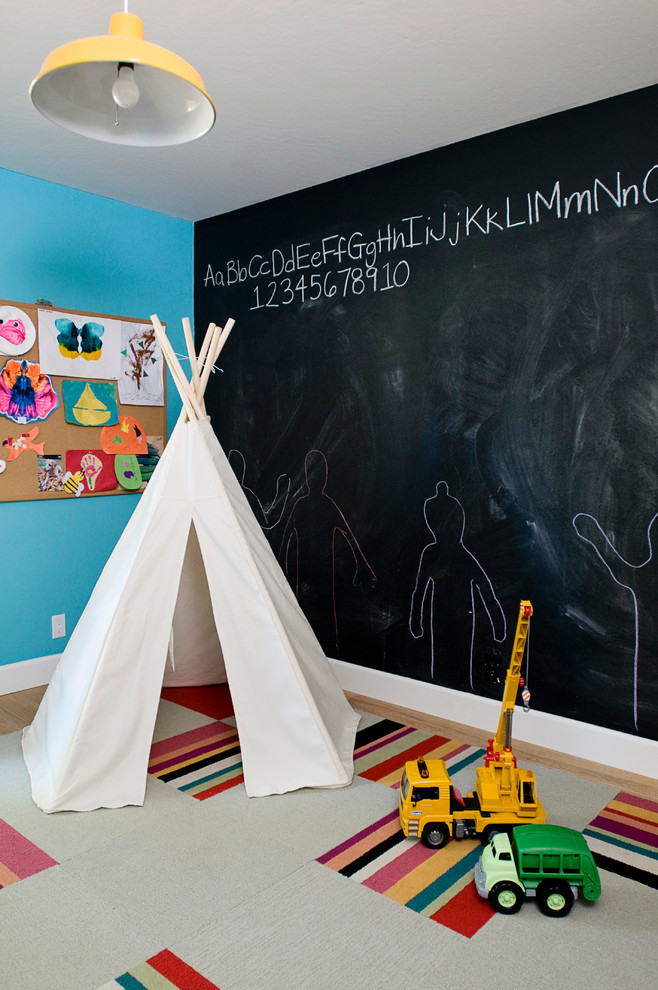 Julie Manning Interior Design
Julie Manning Interior Design
Encourage imaginative expression, education, and creativity by using chalkboard or whiteboard paint on at least one wall in a child’s bedroom or playroom. This adds a functional element to the room’s decor while also allowing children to write on the wall without causing permanent damage.
 Design by Numbers
Design by Numbers
Experiment with creating a gradient or ombre effect by blending two or more colors from light to dark. For this style, you can choose monochromatic shades in various tones or choose contrasting colors for a bold look. This technique enlivens the room by adding dynamism and visual interest.
 Paintzen
Paintzen
Use a light or dark neutral color palette to create a more soothing or timeless kid’s room design. These are colors that are understated, versatile, and lack a high level of chromatic intensity. These include colors like white, beige, gray, taupe, charcoal, and even some hues like sage green that have more color than traditional neutrals, but they work well with other colors. These paint color options for kids allow for your child’s preferences to evolve and change over time, as they allow you to easily change out the decor, bedding, and furniture
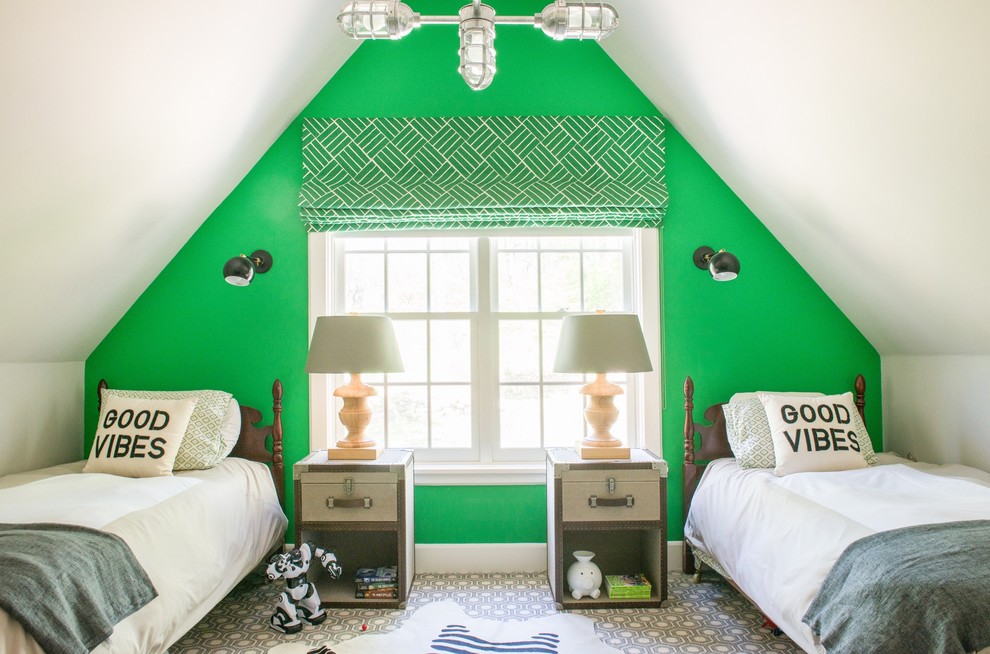 d2 interieurs
d2 interieurs
Use bright and bold colors to infuse energy into the room. Consider your child’s personality and preferences before selecting a paint color. Sunny yellows are upbeat and associated with feelings of joy. Red is a high-energy color. Some experts suggest that this color causes higher levels of aggression. Thus, red works very well in playrooms but may be best used in moderation in bedrooms. Blues and greens—even bolder versions—are associated with creating a soothing environment.
 Space Coast Construction
Space Coast Construction
Add an element of magic to your child’s space with glow-in-the-dark paint. Paint stars, planets, or shapes onto the ceiling or walls to create a celestial effect that only comes to life once the lights go out.
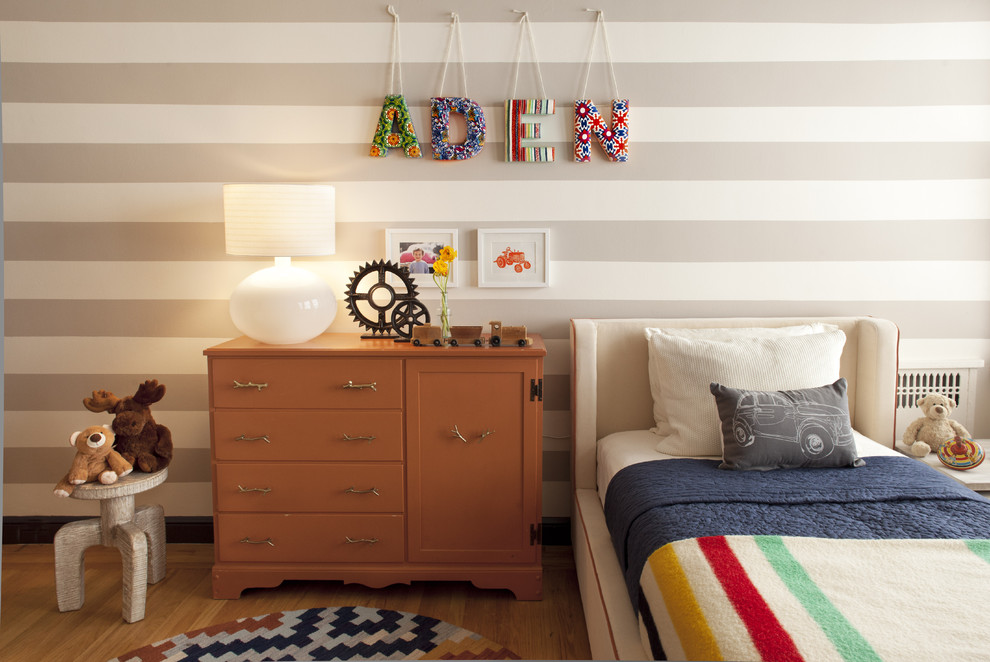 Fletcher Rhodes
Fletcher Rhodes
Experiment with stripes and other patterns that add interest to walls, such as chevrons and plaids. Use monochromatic colors to create more subdued visual interest and texture. To create a lively appearance, opt for striking hues that contrast with one another.
 Caitlin Wilson Design
Caitlin Wilson Design
Paint your child’s room pastel to create a calm and serene space. To achieve a tone-on-tone effect, select a monochromatic color scheme. Select a pastel shade in the middle range for the base color and use lighter variations of the same hue for accents to create a successful monochromatic look. Another option is to use one foundation color and one or two complementary shades for accents to create a contrasting pastel scheme. For guidance on complementary colors, look at the colors that are across from each other on the color wheel.
 reStyled by Valerie
reStyled by Valerie
Accent walls that resemble graffiti can be a fun way to liven up spaces designated for teenagers and free play. Find a graffiti artist to do the painting for you, or provide the kids with the supplies to paint on their own if they want to do it themselves. In some cases, it is best to create an overall design and color scheme to help guide the young artists’ creative expression.
 grOH! Playrooms
grOH! Playrooms
Color blocking, which involves painting different parts of the room in different colors, creates an eclectic and modern look in a child’s room. As always, when using multiple colors, you should create a pleasing color scheme before you begin. Before you begin, consider the function of the room. Playrooms, rather than bedrooms, benefit from a variety of bright, warm colors. Use themes that inspire your child to create a color block palette, such as space’s dark, moody colors or a secret garden’s bright floral tones.
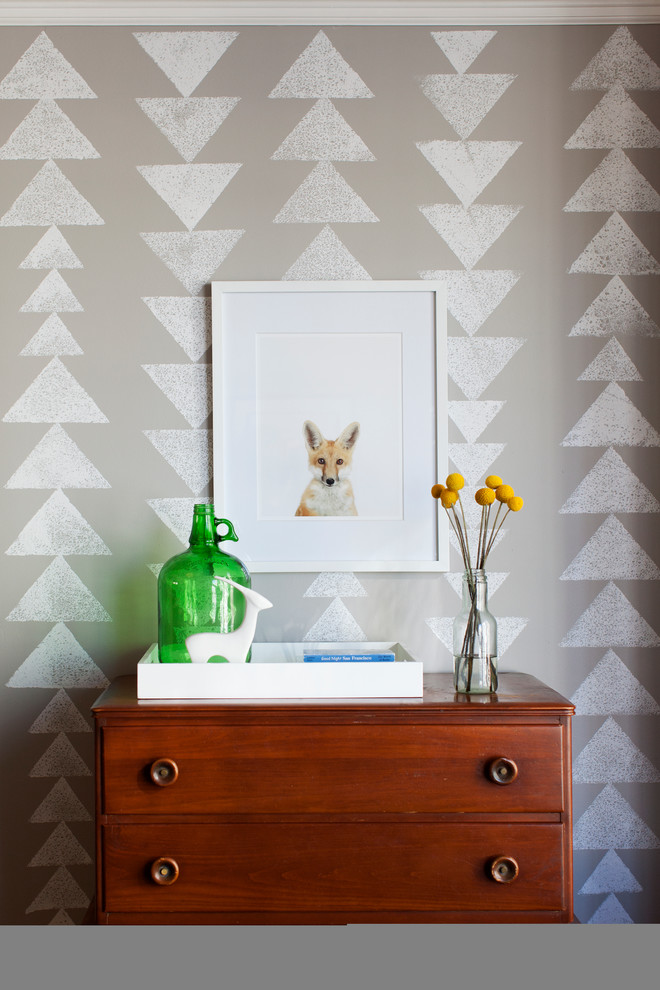 Betz Design Studio
Betz Design Studio
Create an all-encompassing pattern on the walls with a stencil to achieve the same effect as wallpaper. The stencil guides enable anyone to achieve professional-looking results without advanced artistic skills. All you need are the tools, paint, and patience to continue the process. Choose contrasting colors for the wall and stencil to get the most dramatic effect, or go with a tone-on-tone color scheme to give your walls subtle texture and interest.
 Caileen Designs
Caileen Designs
Selecting two colors and painting sections of the wall in these colors is a simple but effective way to use paint in a child’s room. Choose one color plus a neutral, two monochromatic colors, two analogous colors, or two contrasting colors. You can paint the two colors in large sections across the room, either vertically or horizontally. This is an excellent kid room paint option that will grow with your child. It is also simple to change if you want to change one of the colors.
 Design Loves Detail
Design Loves Detail
Create an indoor nature sanctuary by painting your child’s room in nature-inspired colors and themes. To encourage creative and imaginative play, make scenes or color palettes inspired by gardens, forests, and animals. Wallpaper can also be used to achieve a nature-inspired effect, but it can be costly. To save money, use wallpaper on one wall to create a focal point, and then use paint to accent the colors in the paper.
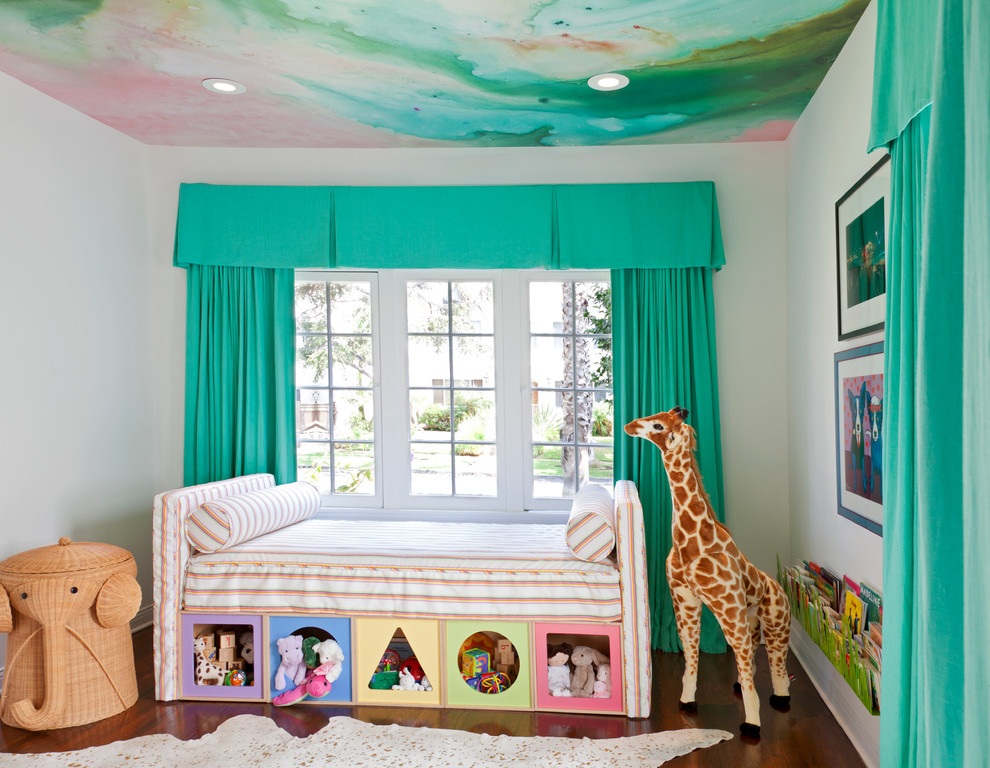 Copper Gyer Design
Copper Gyer Design
Painting the ceiling is a good way to give your child’s room a unique look. Make a mural of clouds, stars, planets, or geometric patterns on the ceiling. You can also simply paint the ceiling a color that contrasts or complements the walls. Choose paint colors that are similar to the wall color for a subtle contrast, or dress up the ceiling with glitter, reflective, or glow-in-the-dark paint.
 Colin Grey Voigt
Colin Grey Voigt
Using wainscoting or other types of wall molding in a child’s bedroom can add sophistication and visual interest to the space. Painting the wainscoting in bright, everyday colors makes the style more playful than formal. Wainscoting adds durability to a room’s design because it is more resistant to wear and tear than drywall. Choose a paint with a high or semi-gloss sheen that will allow you to wipe down minor scuffs and stains.
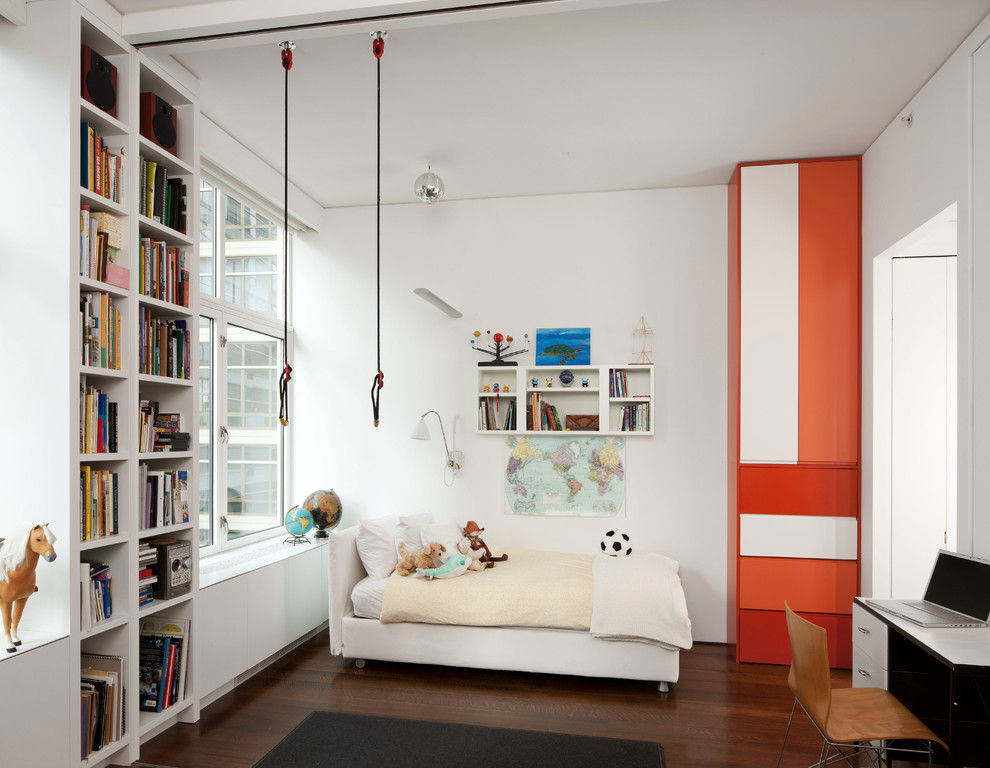 McKay Architecture and Design
McKay Architecture and Design
Take into account the architectural design of your child’s playroom or bedroom. Some rooms have distinctive architectural features, such as a fireplace, a built-in bookcase, or a reading nook, that can be highlighted with a contrasting paint color. To achieve the most dramatic effect, combine neutral walls with a brightly accented focal point. You can also use complementary colors to make different elements stand out against the background walls.

Gisele Bundchen's contemporary twist on this emerging design trend is the talking point of her kitchen
Zendaya taps into the subtle power of this accessory to ensure her neutral living room is never boring
Amazon has become a go-to for chic home decor – here’s what we’re shopping from the 2024 Spring Sale
This designer's 'every seat needs a surface' rule has changed my living room layout forever – here's what I mean
5 designer Amazon storefronts that make shopping for stylish homeware so much easier
Joanna Gaines' 'mesmerizing' garden is the perfect example of how to grow cut spring flowers at home
Tan France opts for this stabilizing color palette to 'ground' his guest cottage, experts say
Shark's St Patrick's Day sale is here - and you can save $100s on vacuums and air purifiers
Matthew and Camila McConaughey's raw cabinets possess a texture and warmth that's replicable in our kitchens
Ideas for Decorating a Windowless Room
How Long Can You Expect Your Water Heater to Last?
10 Expert Fixes to Flush Your Clogging Woes Away
How Much Does it Cost to Replace a Water Heater?
Don’t Make These Rain Barrel Blunders! Top 6 Mistakes to Dodge
Coffee Grounds for De-Icing: Does It Work?
Tank vs. Tankless Water Heater: Which is Right for You?
16 Kid’s Room Paint Ideas to Inspire Creativity and Joy
Winter Home Maintenance Checklist For Before the Cold Weather Arrives
Water Heater Maintenance Checklist